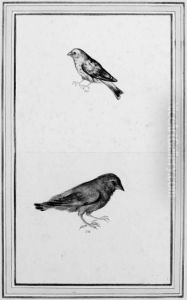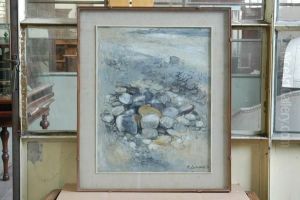Vincenzo Leonardi Paintings
Vincenzo Leonardi, also known as Vincenzio Leonardi or Vincentius Leonardus, was an Italian artist, notably recognized for his work in the field of natural history illustration during the Baroque period. Born in 1589, in Rome, Italy, he was active during a time when the study of natural sciences and the artistic representation of flora and fauna were becoming increasingly intertwined.
Leonardi's contributions to art and science are particularly notable through his association with the scientific academy, the Accademia dei Lincei. This academy, founded in 1603 by Prince Federico Cesi, was one of the first of its kind in Europe dedicated to the empirical study of natural phenomena, and it counted Galileo Galilei among its members. Leonardi became involved with the Accademia dei Lincei thanks to his skill as an illustrator and his keen eye for detail, which were highly valued in the meticulous documentation of botanical and zoological specimens.
Although not as widely known as some of his contemporaries, Leonardi's work was crucial in the development of scientific illustration. His illustrations often combined artistic beauty with scientific accuracy, and they were used to document specimens in the academy's collection as well as in the publication of natural history studies. His drawings are characterized by their precision and clarity, which was essential for the scientific community of the time, as it provided visual documentation for research and discussions on various species.
Leonardi died in 1646, leaving behind a legacy as a pioneer in the field of scientific illustration. His works remain an important resource for understanding the early collaboration between art and science, particularly in the documentation of the natural world. His contributions helped set the stage for future naturalists and artists, who would continue to explore and document the diversity of life on Earth with increasing detail and accuracy.

